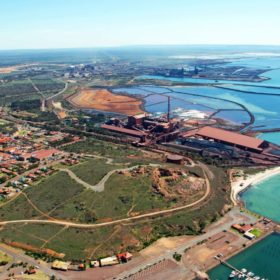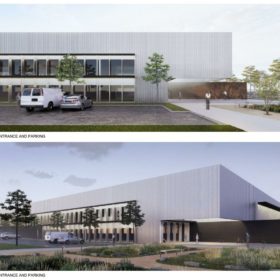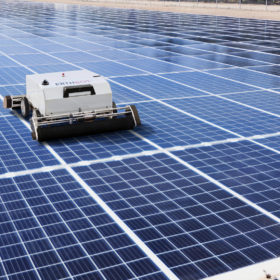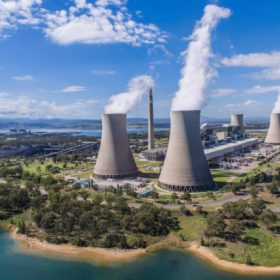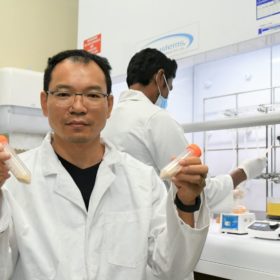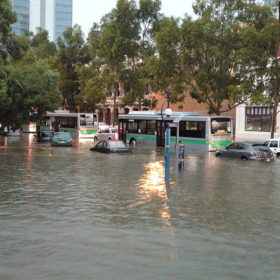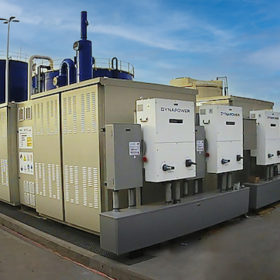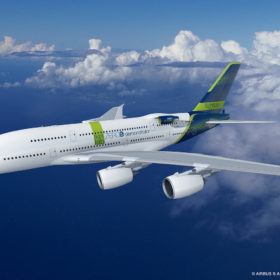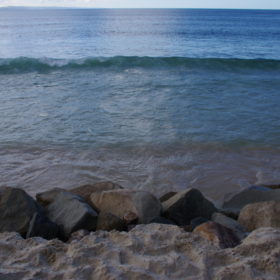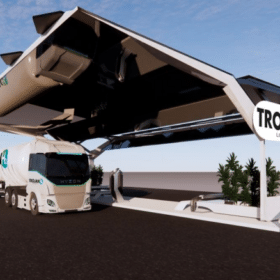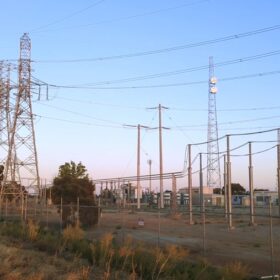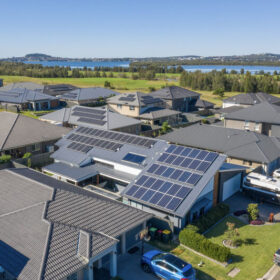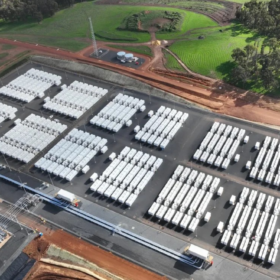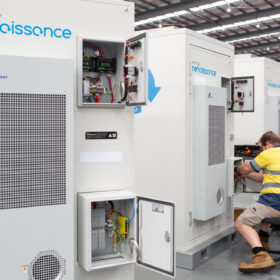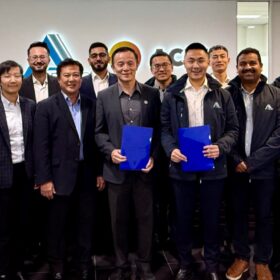State opposition taps Whyalla to host $593 million green hydrogen plant
The South Australian industrial city of Whyalla has been revealed as the preferred location for a $593 million green hydrogen project that the state opposition plans to build if it wins this month’s state election.
World’s largest electrolyser fab breaks ground in Australia
Fortescue Future Industries says the first electrolysers to be manufactured at the facility, early next year, are earmarked for use in Queensland at FFI’s planned green-hydrogen-to-ammonia project on Gibson Island.
Rackless, earth-mounted solar provider earns funding
Erthos secured a US$17.5 million (AU$24 million) Series B from an investor who participated in the startup of Tesla and SpaceX. The utility-scale solar company has a 2.5GW project pipeline.
Origin plans hydrogen hub in place of its soon-to-be-closing coal assets
Origin Energy has announced plans for a potential Hunter Valley Hydrogen Hub underpinned by a deal it’s made with mining and infrastructure company Orica.
Organic battery progress brings Adelaide researchers tantalisingly close to full biodegradability
The realisation of biodegradable batteries is a step closer thanks to research from South Australia’s Flinders University, which has developed a 2.8V organic polymer battery. While this battery was made from synthetic polymers, research lead Dr Zhongfan Jia told pv magazine Australia the team’s future iterations will source “materials directly from nature” saying this promises to reduce waste and reliance on mined materials and could have novel applications in fields like biotech.
New IPCC report shows Australia is at real risk from climate change, with impacts worsening and wide-ranging adaptation needed
Climatic trends, extreme conditions and sea level rise are already hitting many of Australia’s ecosystems, industries and cities hard. As climate change intensifies, we are now seeing cascading and compounding impacts and risks, including where extreme events coincide. These are placing even greater pressure on our ability to respond.
Redflow’s redox flow batteries to be assessed by Underwriters Laboratories
Underwriters Laboratories, a US non-profit standards development organisation, will carry out research into the operating and safety profile of Queensland company Redflow’s redox flow batteries under nominal and off-nominal conditions.
Airbus plans flight test with direct combustion engine fuelled by hydrogen
Elsewhere, Chinese researchers have synthesised ultrafine Pd100-xCux nanodot-modified TiO2 photocatalysts that display optimised energy barrier for interfacial hydrogen desertion, which reportedly exhibits excellent H2-evolution activity and stability, and Mitsubishi Heavy Industries has presented its plans to establish the Takasago Hydrogen Park, calling it the world’s first centre for validation of hydrogen-related technologies, from hydrogen production to power generation.
Novel Australian project examines if renewable energy machines can protect coastlines
What can wave energy converters do that no other form of renewable energy can? Well, they can remove waves’ energy. For a country like Australia, where much of our population and wealth is concentrated on coastlines evermore frequently battered by extreme weather, this proposition is particularly attractive. Especially if the technology is able to offer both protection and green electricity without radically altering marine ecosystems and aesthetics. “No one has looked at what we’re looking at before: combining power generation with coastal protection and trying to control it,” Professor Richard Manasseh told pv magazine Australia.
Petroleum refinery soon to house green hydrogen service station
ARENA will give $22.8 million in funding to Viva Energy to build a renewable hydrogen and EV charging service station opposite its petroleum refinery in Geelong, Victoria.
